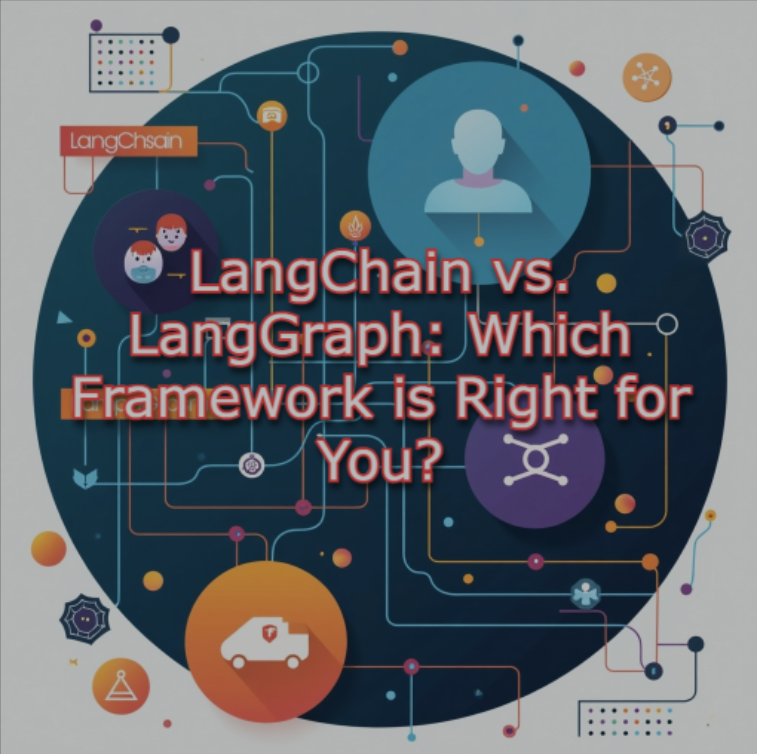LangChain vs. LangGraph: Which Framework is Right for You?

The choice between LangChain and LangGraph in 2025 represents a critical decision point for developers building AI applications. While both frameworks emerge from the same ecosystem, they serve fundamentally different purposes and architectural approaches, making the selection process crucial for project success.
Core Framework Philosophy
LangChain operates as a modular framework designed to chain together language model components in linear sequences. Consequently, it excels at creating straightforward workflows where each step builds upon the previous one. The framework emphasizes flexibility through its component-based architecture, allowing developers to mix prompts, memory, and agents seamlessly.
Meanwhile, LangGraph focuses on stateful orchestration, treating workflows as directed graphs rather than linear chains. Furthermore, this approach enables complex decision trees, loops, and adaptive behavior that traditional chain-based systems cannot achieve effectively. The framework provides robust state management across execution cycles.
Architectural Differences and Use Cases
The architectural distinctions between these frameworks become apparent when examining their intended applications. LangChain works best for predictable workflows such as chatbots, retrieval-augmented generation (RAG) pipelines, and summarization systems. Additionally, its linear structure makes it ideal for question-answer systems where the process follows a consistent pattern.
However, LangGraph shines in scenarios requiring dynamic decision-making and multi-agent collaboration. Virtual assistants, review-and-approval workflows, and applications requiring human-in-the-loop interactions benefit significantly from its graph-based architecture. Moreover, its stateful nature makes it perfect for long-running processes that need to maintain context across multiple interactions.
Development Complexity and Learning Curve
When considering development complexity, both frameworks present different challenges and advantages. LangChain requires careful orchestration of multiple components, which can create a steeper learning curve for complex applications. Nevertheless, its modular nature allows developers to start simple and gradually add complexity as needed.
In contrast, LangGraph simplifies development through structured workflows using directed acyclic graphs (DAGs). Consequently, developers can more easily track agent decisions and optimize multi-step processes without manually managing complex logic flows. The framework’s visual representation of workflow states enhances debugging and optimization.
Performance and Scalability Considerations
Performance characteristics differ significantly between the two frameworks based on their architectural approaches. LangChain optimizes performance through selective component integration, allowing developers to fine-tune specific elements for efficiency. However, scaling large-scale pipelines can become challenging without careful optimization of memory usage and API calls.
Meanwhile, LangGraph’s structured execution model minimizes redundant operations through its graph-based approach. Additionally, the framework’s built-in state tracking enables more efficient handling of complex, long-running processes without excessive computational overhead. This makes it particularly effective for real-time systems requiring continuous adaptation.
State Management and Memory
State management represents one of the most significant differences between the frameworks. LangChain provides limited state management, requiring extra setup to maintain memory across runs and pass data between workflow steps. While functional, this approach can become cumbersome for applications requiring persistent context.
Conversely, LangGraph makes state central to its architecture, allowing every node to read and write to shared state effortlessly. Furthermore, this built-in statefulness enables seamless collaboration between humans and agents, with easy inspection and rollback capabilities for correcting course when needed.
Production Deployment and Control
For production environments, the frameworks offer different advantages. LangChain’s mature ecosystem provides extensive integration options and battle-tested components for deploying AI applications at scale. However, managing complex workflows in production can require significant orchestration effort.
LangGraph addresses production challenges through its platform-first approach, offering built-in deployment infrastructure designed specifically for stateful, long-running workflows. Additionally, the framework includes comprehensive debugging tools, human-in-the-loop checkpoints, and quality control mechanisms that prevent agents from veering off course.
Making the Strategic Choice
The decision ultimately depends on your specific requirements and technical constraints. Choose LangChain when building straightforward workflows with predictable steps, requiring maximum component flexibility, or working with teams comfortable managing multiple framework components. This framework excels for traditional NLP tasks and applications with well-defined processing pipelines.
Select LangGraph when developing complex multi-agent systems, requiring persistent state management, or building applications with dynamic decision-making requirements. The framework proves invaluable for human-AI collaboration scenarios, long-running processes, and applications needing robust debugging and control mechanisms.
Future-Proofing Your Decision
As AI applications become increasingly sophisticated in 2025, the trend moves toward stateful, collaborative systems that can adapt to changing conditions. LangGraph’s architecture aligns with this evolution, providing the foundation for next-generation AI applications that require complex orchestration and human oversight.
However, LangChain remains essential for many applications and continues evolving to support new use cases. Consider your long-term goals: if you anticipate growing complexity and need for advanced orchestration, LangGraph provides a future-ready foundation. For straightforward applications with clear workflows, LangChain offers proven reliability and extensive community support.
Both frameworks represent powerful tools for AI development, with the optimal choice depending on your specific application requirements, team expertise, and long-term architectural vision.